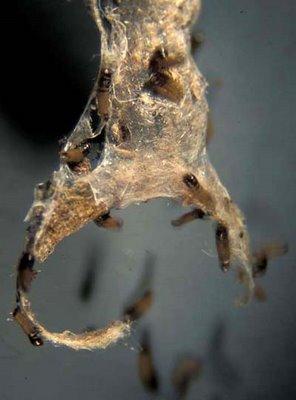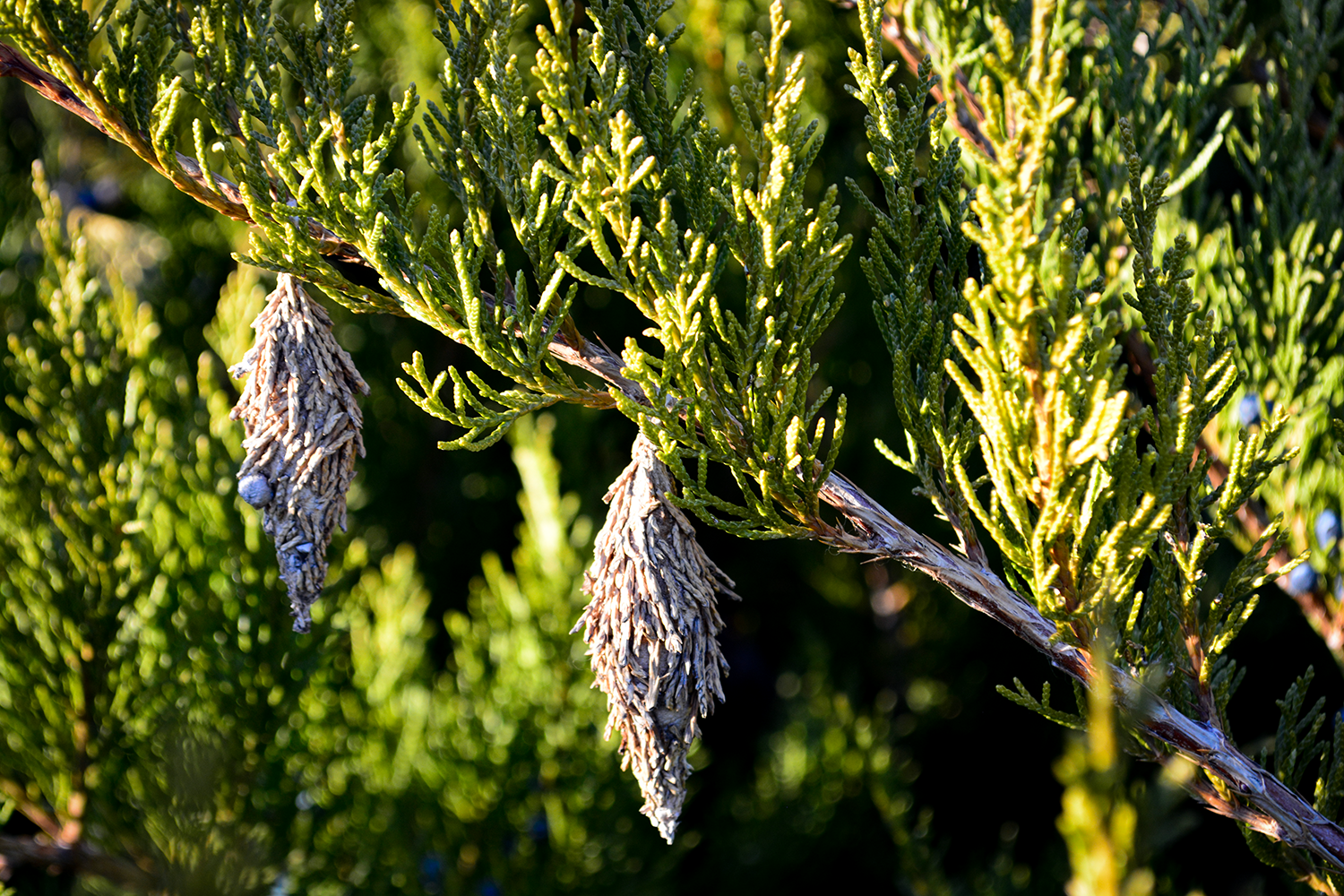Bagworms: These ornate bags may look harmless, but they can wreak havoc on your landscape if uncontrolled
In early winter you may start seeing intricate pine cones developing in your trees and shrubs. While intriguing, these ‘ornaments’ may lead to unsightly damage or even death of your plant if left unchecked. Here we give tips for dealing with bagworms.
What are bagworms and how do they damage the tree?
Similar to the caterpillars that make Chinese silk, bagworms are a group of caterpillars that live and feed in trees and shrubs. Up to 1000 larvae emerge from silk bags (pictured) in the spring and feed on the foliage of their host, forming spider web-like colonies by mid-summer. In August or September, adult males emerge from cocoons and quickly mate with female caterpillars who deposit eggs in their bags and then die. These bags provide protection through the winter for the larvae. Each caterpillar carries their own bag on a strand of silk and can move to different parts of the tree or to a new tree by wind, spreading the infestation. If several groups persist on one plant, the feeding frenzy can damage the tree enough to kill it. Homeowner actions in the winter and spring are critical to controlling the spread.

Bagworms hatching from their silk bag in early spring. Each bag can yield up to 1000 larvae.
(Photo Courtesy University of Delaware)
What can I do to limit the damage?
- The cheapest and most effective way to limit the bagworms is to handpick their silk bags in winter or early spring. Drop the bags in bowl of soapy water and let them soak overnight and then dispose of the bags. Do not let the bags sit on the ground as they can still develop in the spring.
- If handpicking is not safe or practical (too many bags or in tall trees), you can use insecticide spray, but take caution and be sure to spray at the right time. Even natural-based insecticides can cause unintended damage to honeybees, butterflies and other beneficial insects. To determine timing, collect a few of the bags in late winter and keep them in a container out of sunlight. Once the caterpillars hatch, it is time to apply the insecticide. Make sure you are applying no more than the recommended amounts. Natural insecticides that contain Bacillus thuringiensis var. kurstaki (Btk) are less damaging to the surrounding environment.
- If only a few bags were found or your tree is unaffected, but susceptible, you can promote natural controls through planting and attracting predators. Birds, insect parasites and insect predators are enemies of the bagworm. Plant members of the aster family (daisies, zinnas, marigold, woodland aster, blazing star.) near the tree or shrub to attract natural predators.
What plants are commonly affected by bagworms?
Arborvitae, Cedars, Cypress, Junipers, Pines, Hawthorn. Sycamore, Black locust, Wild cherry, Honey locust, Spruce, Various oaks. Apple, Basswood, Boxelder, Elm, Maple, Sumac.
Breaking Ground is a Design/Build Landscape contractor specializing in the residential and specialty commercial markets. Our operations yard is located in Western Douglas County. From this location we proudly serve the greater Omaha metro/rural region to include: Bennington, Blair, Bellevue, Elkhorn, Fremont, Gretna, LaVista, Papillion, Omaha and Valley.
